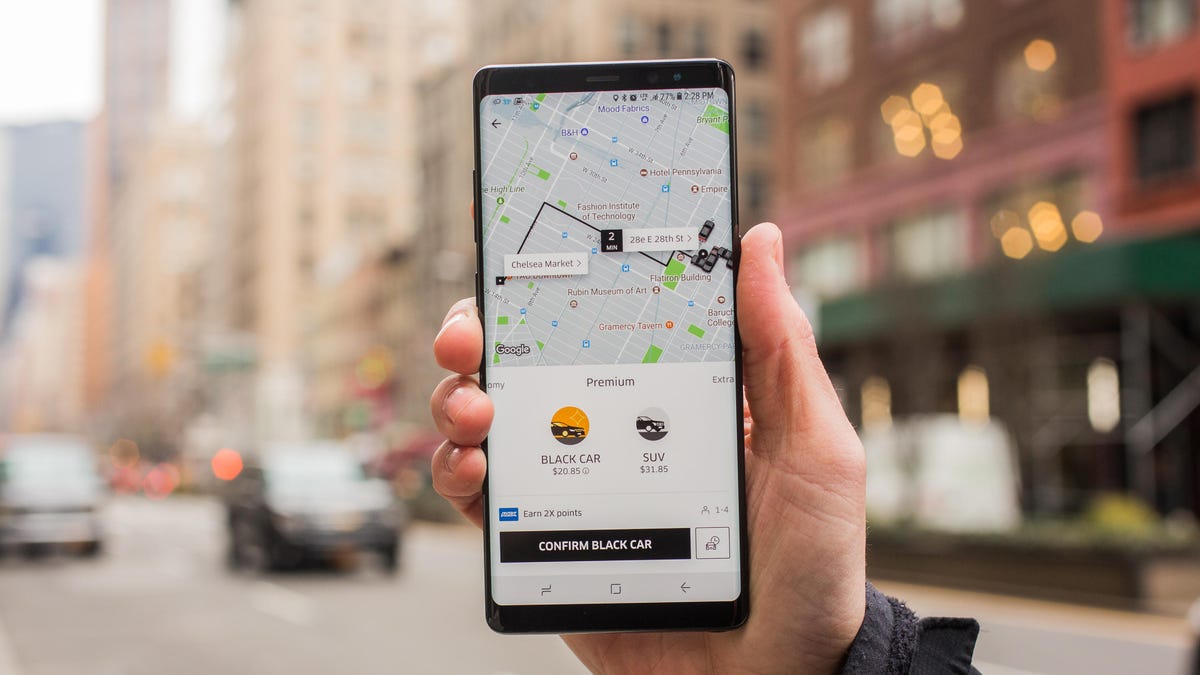Uber patent application could route users around 'unsafe' areas
It's bound to be controversial if it actually becomes part of the app.

Uber sure does seem to love getting itself into some controversial situations, and it could very well wade into yet another if one of its patent applications becomes actual tech.
Uber has applied for a patent for "Safe routing for navigation systems." According to the patent, it would allow users to select a route that's perhaps safer than the fastest or otherwise most optimal route would be. It could take all manner of data into account, including crime statistics, academic databases and even social media posts.
The tech could also be used to fine-tune pickup and drop-off locations. "Safe areas may be determined based on the number of incidents relevant to driver or rider safety, the presence of lighting, the presence of pull-off areas... and one or more of the like," the patent text reads.
This tech has some big benefits, but it also has some big drawbacks.
It could also be used to gauge the safety of each driver's vehicle. Even basic information like year, make and model could be compared with federal crash databases or other statistics that provide a baseline. If a rider and an Uber driver were to be paired, but the rider's safety preferences didn't align with the driver's, it would continue to look for a driver whose vehicle best matched the rider's preferences.
Some of this could help make for a better trip. For example, if the system knows to avoid an area where a baseball game is just letting out, it could keep a rider and driver from being clogged up in a sea of revelry. Finding safer pickup and drop-off locations could help improve traffic congestion and pre- and post-ride passenger safety, too.
But -- and this is a big but -- it could also be used in less savory ways. Like Microsoft's similar GPS-related patent from 2012, there's the potential for the system to be used as an "avoid ghetto" feature, a term that I'm sure Microsoft didn't enjoy having attached to its tech. Having tech that could be used for outright classist or racist purposes isn't something Uber probably wants, even if its intentions have nothing to do with that. Uber does controversy well enough as it is.
The same could be said for the car-based safety preferences, too. For many Uber drivers the job is their primary income, and not everyone has the latest and greatest car. If a number of customers opted for vehicles with higher safety ratings, it could prevent drivers of certain models from making as much (or any) money, which could impact their ability to afford a newer, safer vehicle -- see where this is going? It's perpetuating a not-too-great cycle.
Of course, applying for a patent doesn't mean that said patent will be granted. Nor does it mean the tech is destined for the real world -- oftentimes, companies will patent an idea or tech just to prevent others from using it. While, in this case, Uber's tech might be well-intentioned, it has an equal chance of being used in some not-too-great ways. Perhaps it's best if this one stays on the shelf.
(Hat tip to Motor1!)

